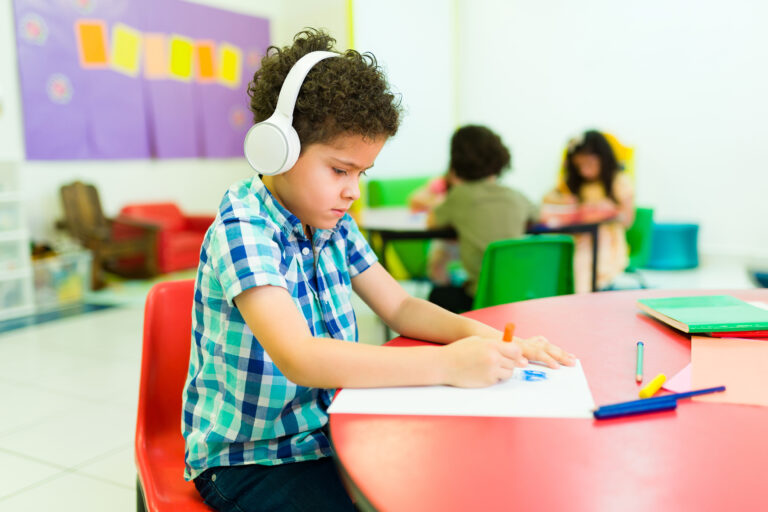Prioritizing Mental Wellness in Education: A Trauma-Informed Approach to Empower Teachers and Students
As we embrace Mental Health Awareness Month, it’s crucial to reflect on the invaluable role educators play in shaping the emotional and social well-being of our communities. Now more than ever, the importance of prioritizing mental wellness in schools cannot be overstated. At Starr Commonwealth, we believe in the power of a trauma-informed approach to education, one that champions the social and emotional well-being of every individual within the school community.
Educators are the unsung heroes who impart knowledge and provide a nurturing environment where students can thrive emotionally and academically. However, to effectively support our students, we must first support our educators. They are the heartbeat of our schools, and their well-being is paramount to creating safe and supportive learning environments.
Incorporating trauma-informed practices into schools is not just about understanding the impact trauma has on one’s ability to learn; it’s about fostering a culture of empathy, understanding, and resilience. It’s about recognizing that every individual brings their own unique experiences to the classroom and creating a safe space where they feel valued and heard; a space where every individual feels like they belong simply by showing up as their most authentic selves.
So, how can we empower educators to prioritize mental wellness for themselves and their students? It starts with embracing a strengths-based approach—one that celebrates the resilience and potential within each person. Here are five effective strategies educators can implement today to prioritize student mental wellness in their learning environments from a trauma-informed approach:
- Create a Safe and Supportive Environment: Foster a sense of safety and belonging in the classroom by establishing clear expectations for behavior and providing consistent routines that are co-created between the teacher and students in the room. Create physical spaces that feel welcoming and comfortable, and encourage open communication where students feel safe to express their thoughts and emotions without fear of judgment.
- Practice Mindfulness and Self-Regulation: Incorporate mindfulness exercises and self-regulation techniques into daily routines to help students manage stress and regulate their emotions. Teach breathing exercises, guided meditation, or simple yoga poses to help students develop awareness of their thoughts and feelings, promoting emotional regulation and resilience.
Get an in-depth guide to more mind-body activities by ordering the workbook below!
- Promote Positive Relationships: Build positive relationships with students based on trust, respect, and empathy. Take the time to get to know each student individually, show genuine interest in their well-being, and provide opportunities for meaningful connection. Recognize and celebrate their individual strengths and accomplishments daily, fostering a sense of belonging and worthiness.
- Teach Coping Skills: Equip students with practical coping skills to manage adversity and navigate challenging situations. Teach problem-solving strategies, effective communication skills, and stress management techniques to empower students to respond adaptively to stressors and build resilience. Encourage self-reflection and goal-setting to promote personal growth and development.
- Provide Access to Support Services: Ensure students have access to appropriate support services and resources to address their mental health needs. Collaborate with school counselors, social workers, and other mental health professionals to provide interventions and support tailored to individual student needs. Offer psychoeducation to students and families about mental health and available resources, reducing stigma and promoting help-seeking behavior.
As we navigate the complexities of education, let us remember the profound impact that a trauma-informed approach can have on the well-being of our students and educators alike. Let us celebrate the resilience and strength within each member of our school community, and let us continue to prioritize mental wellness as we shape the future together.
This Mental Health Awareness Month, let us recommit ourselves to creating schools where every individual feels seen, heard, and valued. Together, we can build a brighter, more resilient future for our students and educators alike.








